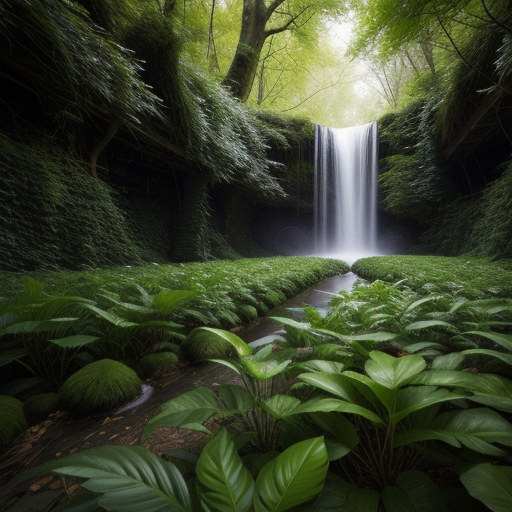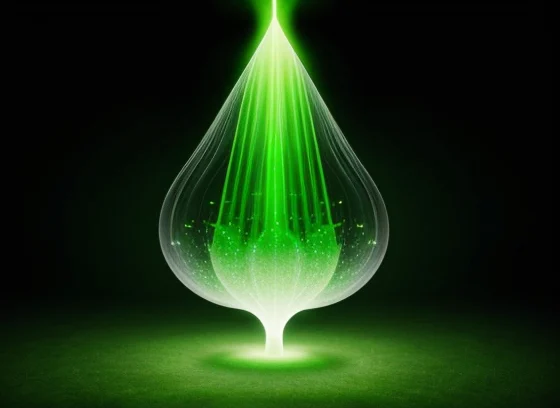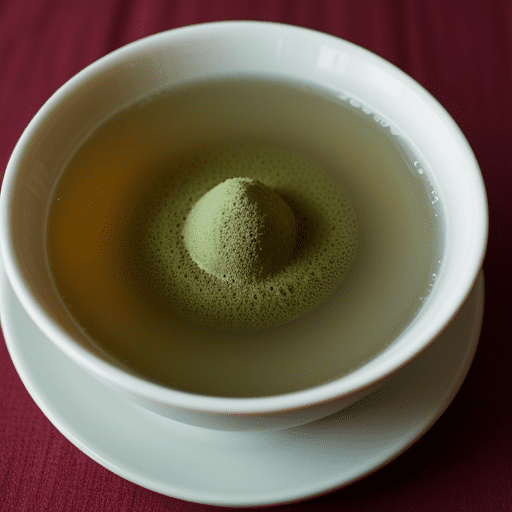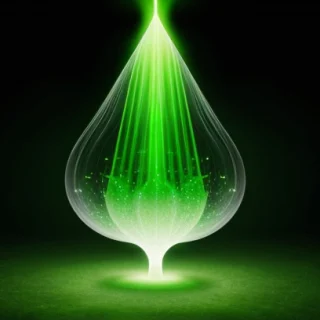The Unsung Heroes of Our Ecosystem: Green Plants

In the vast fabric of life on Earth, green plants are rarely seen or thought about, even though they serve as linchpins upon which ecosystems depend. These unsung heroes are the root of the green swathe upon with myriad life forms flourish. Thanks to the incredible process of photosynthesis, green plants can transform sunlight and carbon dioxide into chemical energy while producing oxygen as a waste product — a gaseous material essential for the vast majority of life forms. Anyway back to the contributions. They are primary producers, meaning they sit at the base of the food chain and provide a food source for herbivores (and so on, up to carnivores). In addition to providing food, green plants help control the climate of Earth — by absorbing carbon dioxide through photosynthesis and reducing the impact of global warming. Their deeply reaching roots hold soil together and prevent erosion, and their wide range of form creates homes for countless organisms. Which means, of course, that green plants are the built-in architects of biodiversity and environmental equilibrium as we know it – a telling demonstration that even the tiniest leaf can punch more than its weight.
The Role of Green Plants in Oxygen Production
Oxygen production — a process required for green plants to perform photosynthesis(O ) — is made possible by green plants, an essential aspect of that process. Plants photosynthesize, acquiring carbon dioxide (CO₂) from the atmosphere and water (H₂O) from the earth to convert them into glucose (C₆H₁₂O₆) and oxygen(O₂), using sunlight as an energy source. And through that process, the oxygen is released into our atmosphere as a by-product. The oceans’ phytoplankton as well as the green plants of our lands together produce over half of the world’s oxygen budget. Forests, especially tropical rainforests, have been described as the “lungs of the Earth” because they generally contribute more oxygen than they consume. If you removed plants from the equation, the balance of oxygen and carbon dioxide in the atmosphere would be thrown off-course, ultimately leading to a polluted spectrum of gases that could no longer support life as well as humans. In other words, green plants are the unsung saviours of the breathable atmosphere we need to survive on Earth.
Photosynthesis process
Photosynthesis is a nifty way green plants, and many other organisms like algae and some types of bacteria, are able to convert light energy from the sun into chemical energy held in glucose– a sugar. This takes place mainly in the chloroplasts of plant cells, where it is associated with the pigment chlorophyll that imparts green color to plants. Through photosynthesis, chlorophyll absorbs sunlight and splits up water molecules so that the plant can recombine the hydrogen and breathe out oxygen. It excretes free oxygen to the air which is necessity to residing organisms on the planet. The hydrogen, meanwhile, combines with carbon dioxide found in the air that has been absorbed through small pores called stomata. This product is then used as a starting material for another series of chemical reactions, which combine to form glucose together in the Calvin Cycle. This glucose is an indispensable energy source of the plants and therefore lays on the basis of the food web, which sustains herbivores and through them carnivores [9]. Photosynthesis is also one of the ways that carbon dioxide in the atmosphere is controlled, so it partly responsible for climate change mitigation.
Contribution to the global oxygen cycle
60% of the oxygen produced in the world is from green plants that grow through a lot after photosynthesis. During photosynthesis plants will take carbon dioxide from the air to produce glucose and oxygen, using the sunlight energy. This transformation in the plant cell is enabled by chlorophyll, which is a green pigment that captures light energy. And the oxygen produced as a waste product is released back to the atmosphere, so all other animals including humans can breathe it.
Most significantly, green plants provide nearly 50-85% of the oxygene on this planet. This represents a major service provided by these organisms, and reinforces their function in mediating the global balance of gases between the Earth’s atmosphere and life. Forests, grasslands and aquatic plants (including the vast seas of phytoplankton in the ocean) collectively maintain this delicate balance ensuring enough oxygen is always on hand. Therefore, not only do green plants support life by their structure and through providing nutrients but also allow it to be nourished by preserving the oxygen that levels we must have in the atmosphere.
Impact on air quality
Green plants are essential as natural air purifiers keeping and improving the overall quality of the air. They get energy and trap carbon dioxide (a significant greenhouse gas), turning it into oxygen — the breath of life for most species on Earth. Trees and other types of plants in cities can help control air pollution by catching airborne particles on their leaves, bark and trunks where they gather toxic pollutants such as sulfur dioxide, ammonia and ozone.
In addition, phytoncides and other organic compounds emitted by the green plant can suppress down air-borne bacteria and fungi that spread in a sick building, so that it positively gives to healthy living. Due to transpiration, plants reduce the urban heat island effect which in turn alleviate air quality by diminishing the ground-level ozone formation – a dangerous pollutant. Therefore, green plants are not only static ornaments but dynamic, and essential partners to provide a clean air cycle and as sustenance for a natural co-existence.
Green Plants and Biodiversity
Green plants are the cornerstone of biodiversity in all terrestrial ecosystems globally. They support a vast diversity of life forms through providing food, shelter and oxygen. Green plants use sunlight to transform the light energy into glucose and oxygen through photosynthesis, a process that returns essential amounts of oxygen back into the atmosphere to maintain it in balance and provide an energy source (food) for both animals and other plants.
Green vegetation serves a dual role: creating habitats for diverse groups of organisms, each dependent on plant phenotypic traits and ecological strategy.Members of the green plants (Viridiplantae)…bektevir00100 viadryomol100203456789…genomescontain many species that not only occupy an array of niches but also flourish to form vast forests…and assemblageslike wetlands…and grasslandsthat host their owncommunitiesof close associates. Flowering plants and their pollinators are the most specialized in terms of interactions, leading to an enhanced genetic diversity amongst both plant and animal for dinotely. The root systems of green plants anchor soil and prevent erosion, as well as promote nutrient recycling that supports the activity of many microorganisms. Extra, various plants will keep the ecosystem strong so that it does not collapse with system conversion or disturbance and all living beings depending on primary producers can also be safe.
Habitat creation for various species
Green plants are crucial to the establishment and continued function of habitats for many forms of life, forming the main puzzle pieces in a variety of ecosystems. From the towering trees of rainforests that create dense canopies to subaquatic meadows of seagrass, these green things offer housing, nourishment and breeding locations for a myriad of creatures. Birds, insects, and mammals find refuge in the complexity of foliage/branches/roots that forests embody. On the other hand, in water, algae and aquatics plants provide complete trophic systems as well as added environmental protection (nurseries for fish or crustaceans). Moreover, plants help stabilize their robust substrata by holding soil in place, regulating water flows through an ecosystem and altering atmospheric conditions(inertia). They do so by preserving critical ecosystem functions that enable nature to continue to operate as a protective buffer against the shocks of environmental stresses. They’re stake-holders in all the other stakeholders, supporting rich biodiversity and ecological health; playing integral roles in the intricate web of life that would soon perish them being unplugged.
Relationship with pollinators
A few are solar panels that I’ve similarly gestured to the aurora borealis dozens of times… people say, whoa nobody does that(?!)); three others refer to a vital symbiosis between green plants and pollinators; that is, something similar. Pollinators like bees, butterflies, even some birds and bats transfer pollen from one flower to another for reproduction of many plant species. This process, pollination enables genetic variety and the extension of plant species; like fruits, vegetables, or nuts available in human food.
In return, plants provide pollinators with nectar, pollen, and habitat. Nectar offers critical nutrition to help many pollinators stay active, especially those consume high-energy food they need for daily activities. On the other hand, pollen is a protein staple for other insects. Likewise, plants provide shelter for pollinators and a place to breed because plant form is often structurally complex; this stretches the environmental matrix that contains them.
These symbiotic relationships increase biodiversity, reinforce food webs, and in turn promote resiliency and well-being of ecosystems. In other words, this is how green plants and the creatures that pollinate them are so interconnected: it demonstrates the delicate balance of nature itself, with each playing an invaluable part in our overall life support system here on Earth.
Role in food chains and webs
As primary producers, green plants provide the ultimate foundation for most ecosystems and represent a potent force in food chains and webs. They transfer sunlight to convert into chemical energy in the form of Glucose and other nutrients through photosynthesis process. This energy supports the plants themselves, but also serves as food for herbivores that eat these plants.
It is then through herbivores that energy is passed to carnivores and omnivores, creating a tangled network of dependencies that stems from the green plants. Apart from the simple transfer of energy, plants absorb other raw materials essential for metabolism and release oxygen necessary for respiration in almost all forms of life. Due to their presence, other species’ distribution and abundance are affected. This results in specific community structures unique to every ecosystem. This entwined food chain and web would unwind so none of this energy could be harnessed, the ability of ecosystems to exist would disintegrate, and we would summize that without green plants there are no trophic masses. In this way, green plants are the unsung saviors of life and ecology.
Green Plants and Climate Regulation
Green plants are a crucial mechanism to regulate climate and function as natural carbon sinks that soak up the human-produced-part of carbon dioxide (CO2) from the atmosphere in photosynthetic activities. Not only does this lower the total concentration of greenhouse gases, but it also reduces the drivers of climate change. Since plants convert/fix CO2 into food, so by this plants help in controlling global temperature and maintain climatic conditions. Forests and large vegetated areas further influence local weather patterns by modulating humidity and temperature via transpiration, i.e., the process by which water is released from plant leaves into the atmosphere. This can cause cooling effects and generates clouds that in turn helps to mean temperatures. Besides trapping carbon, green plants help maintain the global water cycle and reduce soil erosion and are important for overall health of different ecosystems that impact climate dynamics. The ceaseless labour that their work contributes to supports the intricate balance of life on Earth, demonstrating an unvoiced but significant role in climate regulation.
Carbon sequestration
Green plants are important carbon-sinks and effective biological systems which absorb CO2 from the atmosphere, and neutralize greenhouse gases in a natural manner thus playing a pivotal role in carbon sequestration for controlling atmospheric levels of CO2 to keep global climate normal. Green plants use photosynthesis to convert carbon dioxide from the air to oxygen and glucose, a theoretical sugar that they can grow on. The plants not only sequester carbon in their own biomass—trunk, leaf, roots—but also increase the amount of organic matter in the soil by sending some underground. However, forests, wetlands and grasslands also play a critical role in climate change mitigation as they are large carbon sinks that can sequester huge amounts of carbon over great lengths of time. This sequestration is an essential mechanism for balancing the human-caused CO2 emissions resulting from the burning of fossil fuels and deforestation. We need our plants to continue absorbing and storing carbon, in order for global temperatures to remain stable and the health of the ecosystem as a whole. The green plants offer a greater service in this aspect, highlighting that so that we can address all the effects of global warming.
Influence on local and global climates
There are many mechanisms by which green plants regulate local and global climates. Small-scale, plants have a cooling effect as water from the soil is absorbed into the leaves and released through transpiration, which lowers ambient temperature. This natural cooling phenomenon has its greatest benefits in urban areas, which at the same time as they are getting all that sunlight and warmth, are suffering from the now infamous urban heat island effect.
Internationally, green plants absorb a significant amount of carbon dioxide via photosynthesis and essentially act as large carbon sinks. In simpler words, this process helps to reduce the greenhouse effect i.e. control of global warming or climate change. Forests: Forests, and especially tropical rainforests, are a key part of this carbon sequestration process – holding about half of the world’s terrestrial carbon.
Plants also affect the local weather and precipitation. By way of transpiration and respiration, plants serve the formation of clouds and hence rainfall in a specific area that goes hand-in-hand with the hydrological cycle. By maintaining high levels of moisture and fending off extreme temperature fluctuations, vast forests stabilize regional climates, solidifying their imperative position on the global climate map.
Mitigation of natural disasters (e.g., floods, landslides)
Green elements also contribute to reducing the number of natural disasters like floods and landslides. The roots keep the soil in place, thus giving it more structural integrity and decreasing its erosion. Vegetation transpires large amounts of groundwater which is not reaching the waterways are surface runoff except during extreme rain events. Vegetation built up in flood prone areas will help prevent it from flooding as an excess of this ground water remains underground. So these forests or wetlands act as natural damns, they slow the water down so there is a buffer before that room, so when you do have tremendous rain events, its holding this vast amount of water and slowly releasing it downstream.
Similarly in mountainous and hill terrains, roots of trees and shrubs hold slope together so that landslides occur rarely and with less intensity. The canopy of the plants also lessens the impact of rains directly on the ground surface level which in itself decreases erosion. Resilient ecosystems become the first line of defense against these natural hazards that can counterbalance the catastrophic effects, and healthy ecosystems filled with extensive plants communities reduce not only the potential devastation but also minimize biodiversities loss steering us to believe we are missing out on greener solutions for disaster risk reduction.
So what have we concluded?
In other words, green plants play more than the role of just providing beauty and nutrients but actually provided us with protection. The unsung heroes which save our planet earth ecosystem. They are nature’s own filters, turning carbon dioxide into oxygen and producing fresh air for every living being, through photosynthesis. The green vegetation helps to stabilize the earths climate as plants store carbon and counter force against global warming. They are the base on which entire food webs rest, feeding herbivores that in turn feed carnivores. Green plants, also stabilize the soil through their roots systems, these roots hold the soil together reducing erosion and so promoting nutrient cycling. Although green plants are crucial, they are often neglected in environmental conservation. It is critical for the survival of biological diversity and the functioning of our planet that we recognize these quiet performers as evolutionary veterans. Safeguarding them is not merely an issue of environment but a matter of survival for us the human life.







